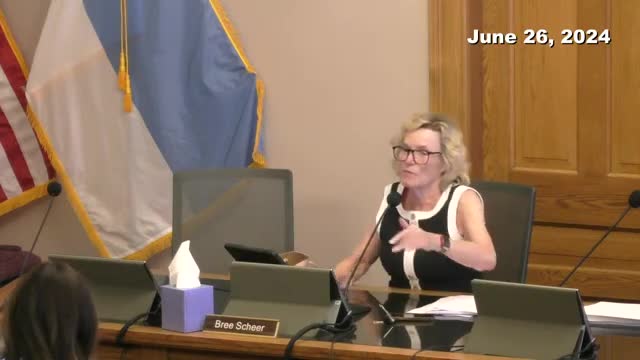Building height debate sparks call for vibrant ground floor designs
June 27, 2024 | Salt Lake City Planning Commission Meeting, Salt Lake City, Salt Lake County, Utah

This article was created by AI summarizing key points discussed. AI makes mistakes, so for full details and context, please refer to the video of the full meeting. Please report any errors so we can fix them. Report an error »

In a recent government meeting, officials engaged in a detailed discussion regarding building height and design standards, particularly focusing on the implications of ground floor uses and building length. A key point of contention was the proposed maximum building length of 250 feet, which some officials argued could lead to monotonous and imposing structures that detract from pedestrian experience.
One official emphasized the importance of maintaining a minimum first-floor height of 14 to 15 feet to enhance the aesthetic appeal and functionality of ground-level spaces. They noted that successful proposals in the past featured taller first floors, which contributed positively to the overall urban environment. The discussion highlighted a desire to avoid long, unbroken facades that could overwhelm pedestrians, suggesting that a maximum length of 200 feet might be more appropriate.
The conversation also touched on the need for vibrant ground floor uses, with officials advocating for commercial spaces that activate the street level. There was a consensus that current zoning codes should be revised to encourage more dynamic ground floor environments, potentially allowing for amenities like coffee shops instead of utilitarian spaces such as bike storage.
Additionally, the topic of architectural features such as deep inserts was raised, with officials expressing a need for clarity on how these elements could enhance the pedestrian experience. The goal is to create buildings that not only meet height requirements but also contribute positively to the streetscape and community interaction.
Overall, the meeting underscored a commitment to refining building regulations to foster a more inviting and engaging urban landscape, while also addressing concerns about the scale and design of new developments. Further discussions and revisions to the proposed standards are expected as officials seek to balance growth with community needs.
One official emphasized the importance of maintaining a minimum first-floor height of 14 to 15 feet to enhance the aesthetic appeal and functionality of ground-level spaces. They noted that successful proposals in the past featured taller first floors, which contributed positively to the overall urban environment. The discussion highlighted a desire to avoid long, unbroken facades that could overwhelm pedestrians, suggesting that a maximum length of 200 feet might be more appropriate.
The conversation also touched on the need for vibrant ground floor uses, with officials advocating for commercial spaces that activate the street level. There was a consensus that current zoning codes should be revised to encourage more dynamic ground floor environments, potentially allowing for amenities like coffee shops instead of utilitarian spaces such as bike storage.
Additionally, the topic of architectural features such as deep inserts was raised, with officials expressing a need for clarity on how these elements could enhance the pedestrian experience. The goal is to create buildings that not only meet height requirements but also contribute positively to the streetscape and community interaction.
Overall, the meeting underscored a commitment to refining building regulations to foster a more inviting and engaging urban landscape, while also addressing concerns about the scale and design of new developments. Further discussions and revisions to the proposed standards are expected as officials seek to balance growth with community needs.
View full meeting
This article is based on a recent meeting—watch the full video and explore the complete transcript for deeper insights into the discussion.
View full meeting

